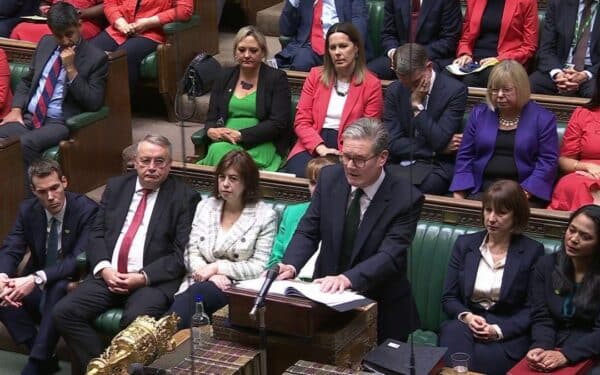According to the IMF, the long-run elasticity of housing supply in the UK is 0.3. In the US, it is more than 5 times higher at 1.6. This means a 10 per cent rise in house prices in the UK increases the supply of housing only marginally – by 3 per cent – whereas, in the US, a similar rise in prices would boost the supply by 16 per cent, enough to make a difference.
The cost of the current planning system is a high cost of housing that bears most on the new entrants to the housing market, especially the young. With rising population growth, children have to live with their parents for far too long and only a lucky few see much prospect of home ownership before early middle age. Moreover, even those who can expect to be able to buy property for themselves generally need to rely on parental contributions, creating a two-tier society. And the shortage of housing pushes rents sky-high.
That the current system doesn’t work is hardly controversial. But views differ on what to do about it.
Labour, likely to be in government by next year, has proposed national planning guidance, a new concept of “grey land” which may prove controversial, new towns and compulsory purchase of land at “market values” unadjusted for any potential change of use combined with the appointment of 300 additional planning officers. The aim is to focus on “social” and “affordable” housing. This was essentially the system that underpinned the post-war housing boom under Harold MacMillan as Housing Minister.
But what worked in the 1950s would probably not work now. The growth of environmental legislation makes it far too easy for anyone who wishes to do so to delay development until it becomes unprofitable for all but the biggest builders. In theory, local government might step in, but their track record is not encouraging.
The House of Lords Committee on the Built Environment came out with 74 recommendations last September. Perhaps the most important are that the requirement to develop be given the same statutory importance as environmental protection: “The Government should place the need to deliver housing on a statutory footing equal to that of environmental protection” and that “the Government should commission a review into the cost implications of satisfying environmental regulations for both housebuilding and large infrastructure projects”.
To get some sense of the mass of conflicting regulations affecting planning, it is worth looking at the planning inspectorate’s training manual which has become available following a Freedom of Information request. This comprises 3,240 pages.
My colleagues in the Growth Commission have started by trying to understand the underlying problems causing too few houses to be built. This is essentially a system that makes it too easy for relatively limited numbers of people to prevent development and, at the same time, removes the incentives from many developers to build.
The problem starts with the semi-monopolisation of housebuilding. An earlier report from the House of Lords Built Environment Committee noted that small and medium-sized enterprises (SMEs) developed 10 per cent of new homes in 2020, down from 39 per cent in 1988. Small housebuilders, provided they have access to finance, have the flexibility to respond rapidly to demand.
Why is housebuilding semi-monopolised? The biggest single reason is that the planning system is not zoned but instead is bespoke. This means that each permission has to be fought for with specialists (often including economists like me) and a wide range of other property and legal experts. Obviously small builders cannot afford this. In addition, the current system suits large builders since they can capitalise their unused planning permissions, an option rarely available to small builders. So whereas it is in the interest of a large builder to create an artificial local shortage and inflate their balance sheet with higher potential prices of the unbuilt houses, small builders rarely have the same chance.
The alternative system is a zoned system as in Australia where planning permission, within general guidance, is automatic. This allows small builders to build without expensive legal processes.
The proportion of built-on land in England is much less than most imagine at only 8.6 per cent of all land. By comparison, the Green Belt has now more than doubled since 1979 to 13 per cent, national parks are 9 per cent and sites of outstanding natural beauty are now 15 per cent. And on the roughly half of the land not covered by these designations, the wide range of environmental restrictions, many with statutory backing, helps local objectors.
To back up zoning, the UK needs to move to a “Use it or lose it” system of planning permissions where, if they are left unused, they lapse. And rather than Labour’s plan of, in effect, a 100 per cent tax on planning gain, which will almost certainly prevent land from coming forward for development, something like Liam Halligan’s ideas would make much more sense. In his book Home Truths and in his evidence to the House of Commons Housing, Communities and Local Government Committee, he has recommended a 50-50 rule for sharing the value of property uplift from planning permissions between the local authority and the developer.
Finally, for those planned developments that do end up being decided upon by planners, it is critical that the House of Lords recommendation of a statutory requirement for economic development is implemented to balance against the environmental rules so often relied on by objectors to prevent development.
Those who think that sidelining so-called nimbies from preventing development is enough will discover that without a much more comprehensive approach, planning reform will fail yet again, to follow the failed reforms of 2004, 2012, 2017 and 2020.
And the Growth Commission has estimated that failure could cost the economy 6.4 per cent of GDP in twenty years time, worth £3,460 per head in todays money. That’s quite a cost.
Douglas McWilliams is Co Chairman of the Growth Commission. As founder and Deputy Chairman of the economic consultants Cebr he has worked as economic adviser on many planning appeals.




